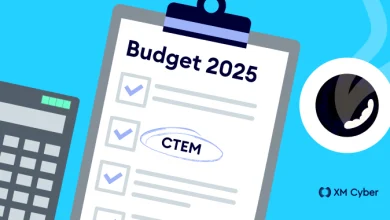How Open-Source Tools Can Help Keep Your Computer Secure – Latest Hacking News

If you’re thinking security, you’ve got a lot of options. With the intensity of cybercrime at the moment, and the stakes we’re often looking at when a crime does occur, a lot of businesses have turned their eyes to figuring out how to keep citizens safe in the online world. There’s a lot of money in this business, but it might surprise you to learn that there are some really solid open-source options that will also keep you safe on the web. It’s not necessarily a case of “you get what you pay for” here: in some cases, open-source can be as safe for your machine as any other option.
Open-source tools are sometimes dismissed from a security perspective because people assume that if they’re free, they can’t be good… but that’s simply not true.
Indeed, open-source tools are a critical part of today’s security landscape and if you’re working on a budget, they should unquestionably be part of your considerations when you’re looking at locking down your online security. Everyone knows that having the right tool for the job makes the job in question run smoothly (and vice versa), and whether it’s leveraging open-source BI tools or making the most of free software to secure your online presence, there are a lot of options. Some are ideal for testing your current security protocols, while others will help you keep things locked down.
Aircrack-ng
After a whole suite of wireless security tools? Look no further. This covers almost every element of making sure your Wi-Fi is impossible to break into. It will analyze packet data, crack complex passwords, and spoof access points, looking for any areas of weakness. Developed by a hacker, it takes a brute-force approach and is designed to figure out any weaknesses so that you can address them.
It isn’t the most user-friendly (there have been complaints about the lack of graphic user interface, for example), but with no price tag attached, and as an ultra-efficient penetration tool, this has a lot going for it. Pair it with other penetration tools like BruteDum and you’re away.
PfSense
Who doesn’t have a firewall these days? We hope nobody is raising their hands… but what firewall are you using? PfSense is an option to consider if you’re thinking open-source; it’s particularly popular right now and has a bunch of associated tools. It’s powerful and flexible – ideal if you need to make adjustments. It can also be expanded and doesn’t contain bloatware, a particularly nice aspect to be aware of.
The support is a bit limited compared with some, but for a free firewall, it’s really got a lot going on, and it’s surprisingly easy to use in many cases; there’s no need for command line prompts, manual editing of rule sets, or anything complicated. If you’ve used commercial-grade firewalls before, you’ll be set. If not, you might be looking at a bit of learning, but it’s likely going to be worth it.
KeePass
Passwords. Often the weak link in the security chain, and the bane of life for many. The temptation to write them down and store them in insecure places often proves too much because most of us simply can’t remember them. Unfortunately, we also know strong passwords are indescribably critical to keeping ourselves safe online, and just using “Password123” won’t cut it… so how do we reconcile these issues?
There is a solution: using software to make up for this shortcoming. KeePass is designed to store passwords, gathering them all up into one super secure database. Data encryption – with some of the absolute best algorithms currently out there – ensures nobody’s going to be taking data from this deposit. All you have to do is keep one master password safe (we do mean safe; don’t stick it on a Post-It on your monitor).
There’s a premium version of this if you want to go a little more advanced, but the free version has all you need to keep your passwords secure.
ClamWin
Antivirus software is – as we should all know by now – critical to defending yourself and your hardware from attacks, and if you’re looking for an open-source option, ClamWin could be the one for you. First up, we want to note that it’s an on-demand scanner, rather than a real-time protection, and it doesn’t have a VPN, firewall, or some of the other options. If you want something simple, though, this is definitely worth considering.
It’s got virus database updates, a virus scanner, and even menu integration with MS Windows Explorer. It features high detection rates, automatic downloads, and a scanning scheduler to make your life easier – all you could really need in your antivirus software.
Users also have the option to improve the software by submitting spyware samples and undetected viruses, which helps everyone. Additionally, it supports some of the older operating systems, which has made it popular in some circles.



